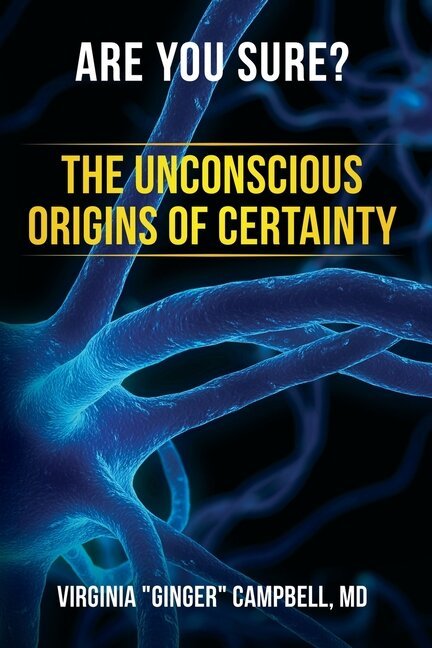BS 210 Neurotransmitters:
Transcript Excerpt
For transcripts to ALL EPISODES sign up for MyLibsyn Premium.
Patreon supporters ($4/month minimum) get new transcripts every month.
Closing Episode Summary:
I started out by discussing some of the basics of brain anatomy and neuron structure, along with a very brief discussion of how an action potential is produced. If you want to learn more about these topics, I highly recommend going to brainsciencepodcast.com and looking at the show notes or looking at the show notes in your audio app, presuming that the app preserves the links. The show notes include both books and links to previous episodes on these topics.
The meat of this episode was a discussion on neurotransmitters and their receptors. Most neurotransmitters are small molecules that have functions outside the neuro system. If a molecule, histamine, for example, is released into the blood stream, it functions as a hormone, but it's only considered neurotransmitter if it's released by a neuron and interacts with a specific receptor usually on a different neuron.
The key to the incredible flexibility and diversity of neurotransmitters comes down to the increasing complexity and diversification of their receptors, and we will explore this from an evolutionary perspective next month with Seth Grant.
Despite their diversity, the receptors come in two basic types; ionotropic or ligand-gated, and metabotropic G-protein-coupled. It is easy to remember which is which by remembering that the ionotropic receptors are actually ion channels that are opened and closed when the ligand, that is to say the neurotransmitter interacts with a receptor protein in the cell membrane.
Since this is a direct effect, it can occur fairly quickly on the order of a 10th of a millisecond. In contrast, the metabotropic G-protein-coupled receptors use one or more second messengers to kick off everything from indirectly opening and closing channels to changing gene expression.
And while the actual synaptic transmission is only slowed down to about 0.5 to 3 milliseconds, the actual effects may occur much later, especially in the case of gene regulation.
Thus, this interaction with these receptors is called neuromodulation. Obviously, the most basic categorization of neuron activity is to ask whether it is excitatory or inhibitory. This depends on which ion channels are opened or closed. Anything that allows a positive cations such as sodium to flow into the cell will make it less negative until a threshold is reached, and then the action potential fires.
In contrast, if negative anions like chloride are allowed to enter the cell, it becomes more negative, and it's inhibited from triggering an action potential. Obviously, any individual neuron is receiving anywhere from thousand to 10,000 individual signals, and these sum up over time and space, and determine whether the neuron depolarizes.
Glutamate is the most common excitatory neurotransmitter. It has several ionotropic receptors that are non-selective cation channels that produce fast excitatory responses.
In contrast, GABA binds to an ionotropic receptor that allows the ion chloride to come in, which inhibits the polarization by making the cell more negative.
This might give you the impression that there is a one-to-one correspondence between each neurotransmitter and what it does, but this is not true because metabotropic G-protein-coupled receptors are much more diverse than that.
And like many neurotransmitters, glutamate interacts with both types of receptors. The monoamines like histamine, dopamine, norepinephrine, and epinephrine, only have metabotropic G-protein-coupled receptors. And from my review, it appears that glycine is the only one that has only ionotropic receptors.
Depending on your background, you may have found this material either too basic or completely overwhelming. Whatever your background, I want you to focus on a few key ideas.
The most important one is that each neurotransmitter has many complex functions that are determined by which receptors that it binds to, and where these receptors are located. It is inaccurate to describe any neurotransmission by a single action.
For example, do not think of dopamine as the reward molecule, because although it is important in the reward circuits of the brain, that's not the only thing that it does, and that really is probably the same message that I communicated back way back in episode eight.
It's all about the receptors. I mean, it's actually kind of surprising how simple the actual neurotransmitters are, and as we will talk further with Seth Grant, it's probably because these simple molecules have been having a signaling role since the beginning of life and before the evolution of nervous systems.
I hope that this episode has given you a sense of how this works. Feel free to let me know what errors I made as I'm sure I made some. I try to be accurate, but this is a complex subject, and I won't be offended if those of you who know more about it than I do point out if I made a mistake.
But I do think that the key idea that the average person needs to know is that the receptors are where the action is, and if you hear somebody tell you that dopamine does this or serotonin does that, you know that that is an oversimplification, and might even be totally wrong.
Next month, I'm going to be talking with Seth Grant some more about the synapse, its evolution, and his more recent discoveries about how diverse synapses really are in terms of which molecules like the receptors, which ones are actually there is very, very varied. So, you'll want to be sure to come back for that next month.
In the meantime, I hope you'll check out my other podcasts, Books and Ideas and Graying Rainbows., and send me email at brainsciencepodcast@gmail.com.
Thanks again for listening. I look forward to talking with you again next month.
For transcripts to ALL EPISODES sign up for MyLibsyn Premium.
Patreon supporters ($4/month minimum) get new transcripts every month.



















